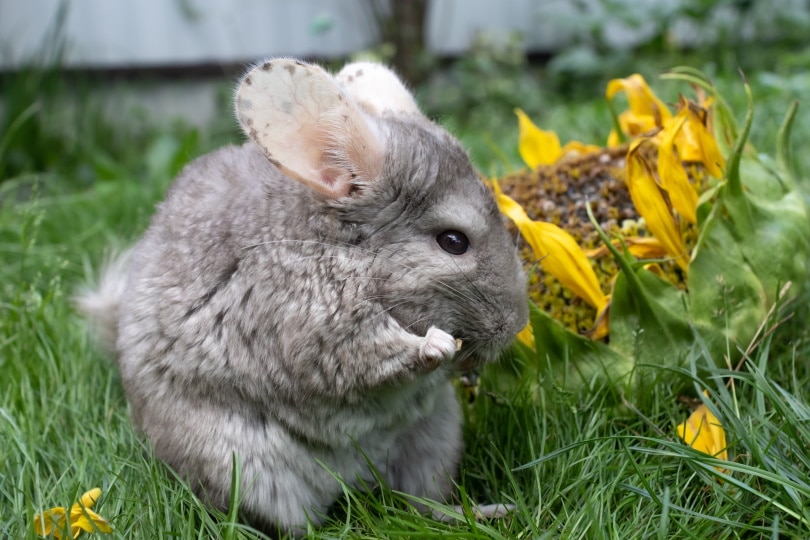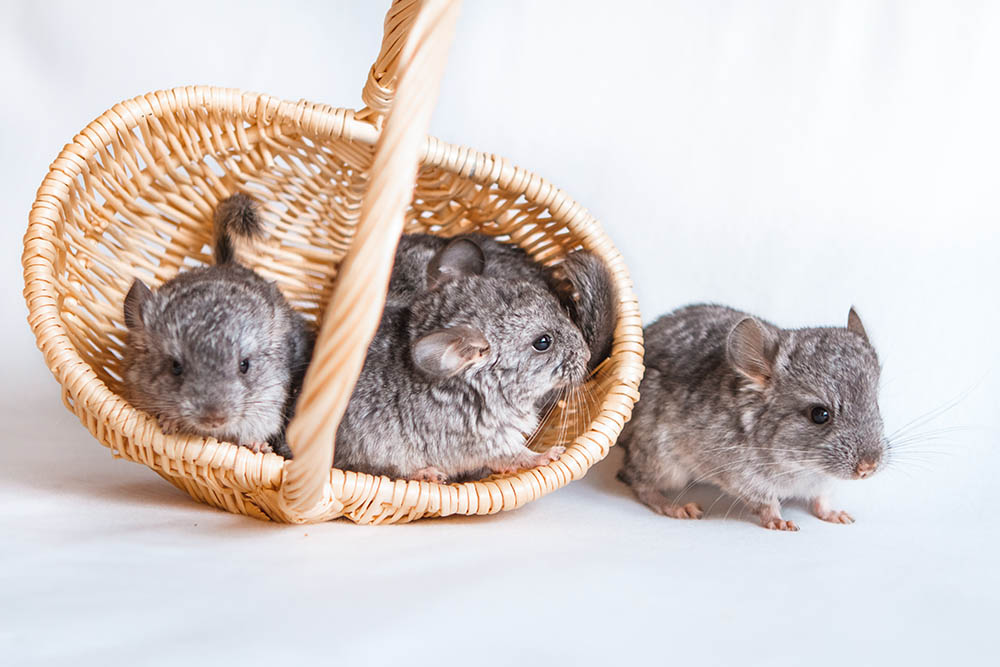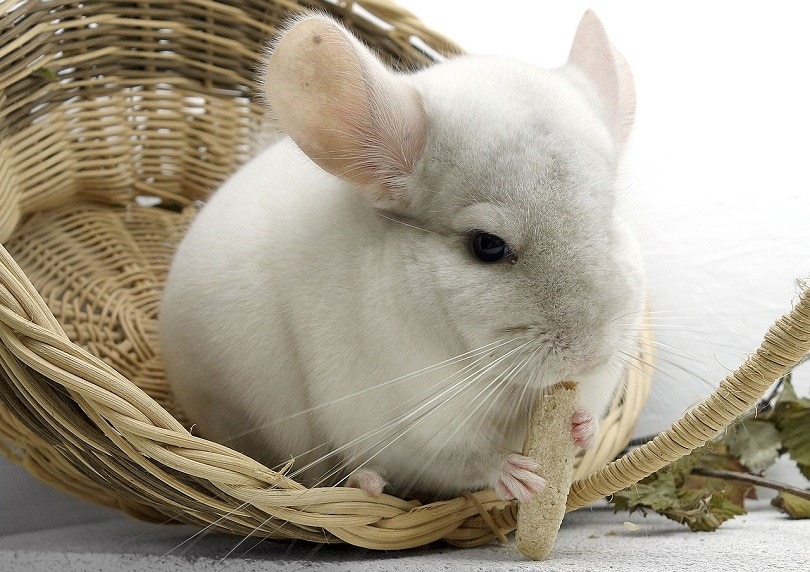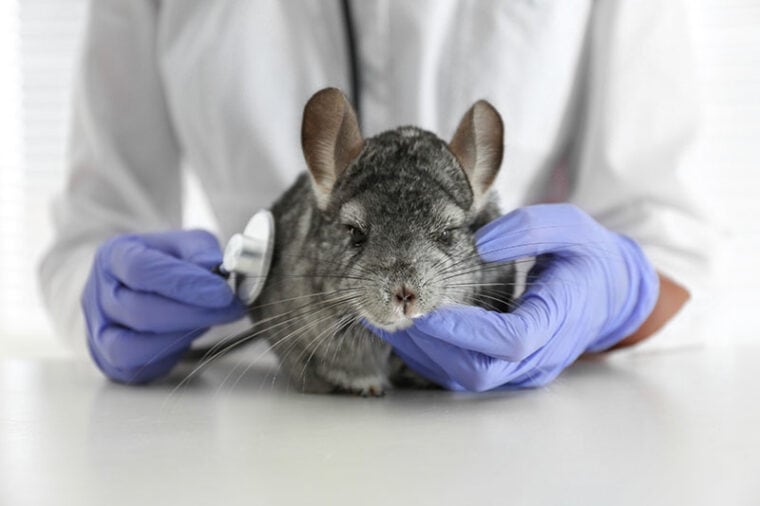
Chinchillas are small, soft, active rodents. Don’t worry—they aren’t that type of rodent. But also, don’t be so judgmental; we embrace all the weird little creatures here!
Hunted to near extinction because of their beautiful coats, chinchillas have mostly relocated into our homes now. While they are best known for their soft coats, which evolved to withstand the cold mountains of South America, they make lovely pets. But, like with any pet, you want to be aware of potential health problems that affect them.
The following list highlights some of the common health problems of chinchillas so you know what to look for so you can keep your fluff ball as healthy as possible.
The 7 Common Chinchilla Health Problems
1. Improper Nutrition
Chinchillas should almost exclusively eat hay. They need to always have it available, and it needs to be good quality and fresh. Grass hay is best. Alfalfa hay is usually too high in fat and protein, especially for adults. These little, round guys are not athletes running the Kentucky Derby!
Hay can get moldy very quickly and easily. The hay you feed should smell fresh and just-like grass, without any insidious undertones. It should not be dusty. Be a nice consistent color. And not contain any miscellaneous objects, such as trash or hidden bits of garbage.
You can let them eat other vegetarian items but see the warnings listed below:
Do not feed a chinchilla the following foods:

2. GI Stasis
In chinchillas (in any herbivore with this type of stomach), a tummy ache is considered an emergency. Gastrointestinal problems can be severe and life-threatening problems.
GI stasis is a catch-all for several gastrointestinal problems that cause the GI tract to slow down and stop working very well. When the GI tract slows down, it blows up with gas caused by microbes that are supposed to help with digestion. The swollen GI tract is very painful and needs immediate relief.
Signs of GI stasis in a chinchilla include the following:
Please note: Chinchillas cannot vomit, so this will not be a sign of GI stasis.
Eating too much starchy food and not enough hay is a common cause of GI stasis. Chinchillas have evolved to have microbes (mostly healthy bacteria) in their GI tract that help digest their high-fiber and low-nutrient grasses. And while there are a lot of things that can cause these microbes to become imbalanced, eating too many treats is a common cause.
Things to avoid that can cause GI stasis are the following:
If you suspect GI stasis, bring them to the vet.
3. Trauma
Chinchillas are quick and busy little fellows. They can easily squirm out of your hands, fall off tables, or get into all sorts of trouble in general. They also easily startle and can run off, hurting themselves in the process, especially with their thin skin and delicate bones.
They also have a unique adaptation where they lose a chunk of their fur if they are grabbed too quickly. This is called fur slip. So also handle your chinchilla carefully, with gentle hands. This is a reflex that allows them to slip away from predators in the wild, but the hair can take months to grow back.
Hold your chinchilla with two hands, making sure you support their top and bottom. Only after you and your chinchilla are comfortable with each other should you try one-handed-holds.
The cage or home you design for your chinchilla can also help protect them from injury. Be sure to provide cage furniture that does not slip or fall. Give them places to hide and feel secure. And have lots of fun places to climb and explore that are still safe.
Types of chinchilla trauma include:
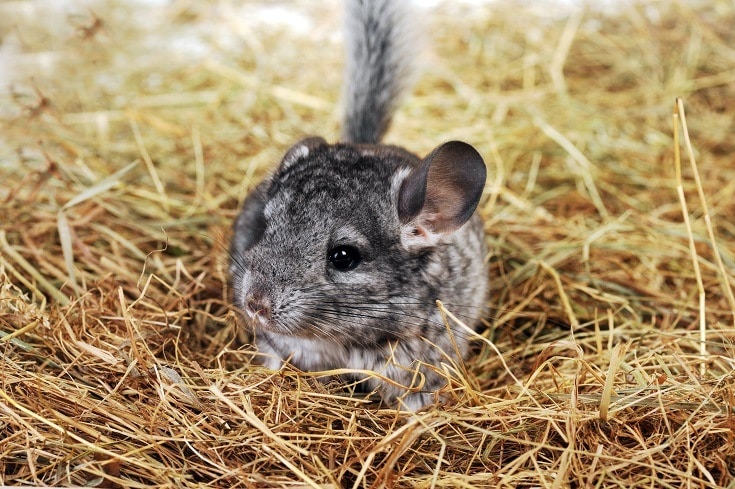
4. Dust-Bath Problems
Let’s talk about dust bathing. Everyone loves this unique feature of chinchillas, who use dust to clean their coats. They need to have regular access to a dust bath for their hygiene. However, if not correctly managed, the dust bath can cause problems.
Dust baths should be enclosed. A covered litter box works well to contain the dust in the air.
They should also be removed. If a chinchilla has access to dust all the time, they tend to spend too much time in the dust, creating problems. And the dust gets everywhere, unmanageable.
Let them have a dust bath once a day or a few times a week. But take it away after that.
Problems from too much dust-bath dust result in the following:
5. Heat Stress
Furthermore, if their cage is not well-ventilated, it also might mean it is too hot for them. Chinchillas get too hot very quickly. And may need veterinary assistance cooling off. Their coats are very thick. They cannot sweat. They are adapted for the mountains of South America, the cold, dry, windy mountain tops.
Always make sure your chinchilla is cool and well-ventilated.
Signs of heat stress are as follows:

6. Eye Infections
Chinchillas commonly get eye infections, also called conjunctivitis, especially if there is too much dust from their baths.
Signs of eye infections can include one or more of the following:
All these problems can happen in one eye or both at the same time.
If your chinchilla gets an eye infection, they may need to have a break from the dust until it gets better. They will also likely need eye drops which, as you can imagine, is a fun project for everyone: dripping eye drops into their eyes. Patience and trust are key.
7. Dental Issues
Chinchilla’s teeth are constantly growing. They do not lose teeth as we do, and their teeth grow continuously from the same root, replenishing themselves.
They stay short and shapely by grinding against each other and the hard, coarse food they eat—in theory. However, dental problems are a major cause of disease in chinchillas. Another reason to feed mostly hay is that it is much harder to chew than treats and pellets, so it’s very good for their teeth.
Some types of dental problems are as follows:
Chinchillas need to go to the vet regularly, if anything, to have a dental check-up. Seeing inside their mouths can be very difficult since their molars are so far back in their cheeks.
If you and your vet catch dental disease early, it is easier to manage. Don’t wait until they can’t eat because their mouth hurts so much.
Signs of dental disease include some of the following:
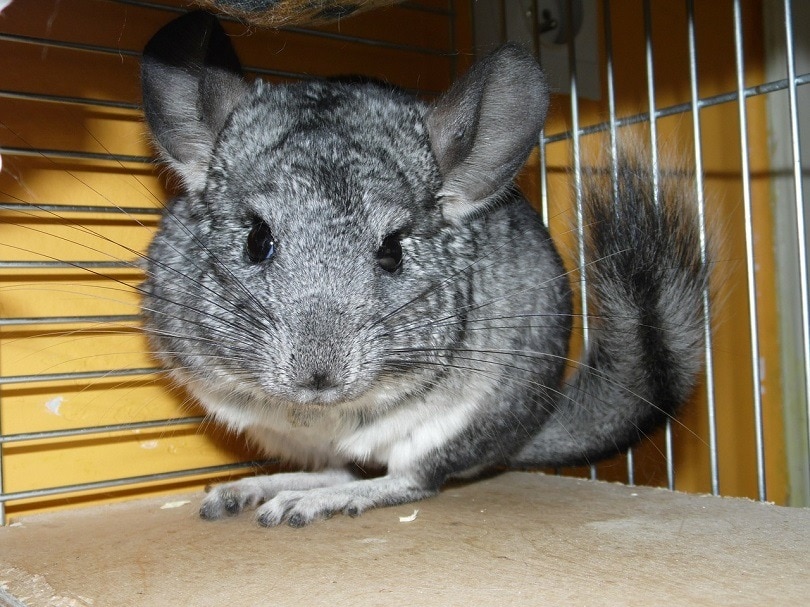
Conclusion
There you have it. A great start to learning about chinchillas is understanding any health issues that might affect them. Chinchillas are not dogs or cats; they are their own species with their own special care needs and quirks. Learning as much as you can about their uniqueness will help you provide the safest and healthiest lifestyle for them.
And always remember: more hay, fewer treats.
Featured Image Credit: New Africa, Shutterstock


